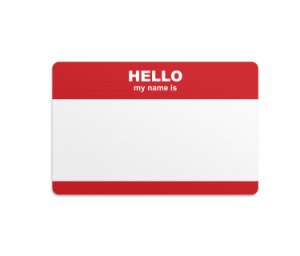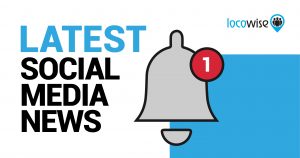
By John Coe, Published November 14, 2014
Old time B2B marketers would see these two words as polar opposites in the marketing continuum and would define them as:
- Branding – a market awareness (hopefully positive) of the company, product and/or service achieved through advertising, PR, and other forms of communication (e.g. trade shows) that communicates the macro story and value proposition. Big picture strategy stuff accompanied with correlated big budgets needed to achieve the intended audience awareness and recall.
- Data – something needed for direct marketing, and alternately referred to as lists. Internally, data was found on Excel sheets in the marketing departments and, of course, within the accounting department even though marketers couldn’t actually see or access it easily. Some data was also recorded on the early CRM systems such as ACT.
To paraphrase the words of an equally old TV commercial – “We’ve come a long way baby.” Both the definitions of branding and data have changed, and we now have new updated definitions. But marketers still don’t see them as closely related.
I’m here to say they are, and here’s why. Branding experts haven’t changed in their definition of the desired end result – a positive view and knowledge of the company, product and/or service. What has changed is the manner in which this result is achieved. Now, all the touches an individual receives from the company accumulate in the mind of that person and create the “brand impression.” In Don Schultz’s book Integrated Marketing he makes the valid point, and I quote, “all the touches accumulate to a behavior.” I couldn’t agree more with Don except that I would amend it to read – “all the touches accumulate to a feeling and behavior.” Here are the most common B2B touch points and touches we have available to us:
- The website appearance and ease of navigation on all pages.
- The website content – is it understandable, of value and printable (you would be surprised how many times I have tried to print something and it’s not a good experience).
- The annoyances while on the site – such as a pop-up asking for a live chat. Once is enough and maybe once is too many!!
- Webinars and white papers – hopefully they are of real value and not sales pitches.
- The quick and promised fulfillment of offers from the website, webinars or direct marketing. These are typically e-based, but every now and then terrestrial mail is used.
- The very first call to an 800 number, and how the call is handled and routed.
- The voice mail message and the speed of call back.
- The very first call you receive as a follow up from attending a webinar, requesting a white paper or attending a trade show.
- The second or third touch whether it be by email or phone – does it refer or reference the prior touches? In other words, do they know me now?
- The increasing degree of relevancy of message and offer as an individual moves forward in their buying process. If I am ready to buy, I don’t need or want the lead generation white paper.
- A positive experience when visiting the trade show booth. Best trade show practices now have an online access to the marketing database so that the booth person can identified and treated the visitor accordingly.
- The sales call either on the phone or in person from the actual sales person responsible for you and/or your company. Do they start out by asking “so tell me a bit about your business” even though you have been in the lead system for 6 months, and have had multiple contacts and conversations?
- The sales call from your new sales person when the old one leaves or is reassigned – can they pick up the conversation where it left off?
- Calls to customer service of all types – do they know me and/or the company and what we’ve purchased?
- And as trivial as this may sound, the reception you receive when making an onsite visit to the seller. Ever had your name displayed on the Welcome Board next to the reception desk? If so, you know what I mean.
I may have missed some of the touch point you use, as this list is not meant to be overly exhaustive.
If all these touches leave the buyer with a good if not great experience, the brand impression will also go from good to great. Remember that the # 1 reason buyers don’t buy is the perceived degree of risk they feel in making the decision – either personally and/or for the company. The less risk the more likely to they are to buy, and a great brand experience helps decrease the perceived degree of risk.
So how can you create positive experiences across all these touches? If you can’t guess where I’m headed, you don’t know me. A dynamic and accurate marketing and sales database properly structured and populated equips you to make each and every one of the touches a better experience for the prospect or customer.
The data on the database should drive what is said and done when one or more of the “touches” occur. Just one usage of a known fact or past behavior can make the individual feel that not only you know them, but you’ve got your act together as well. Notice that none of the touches above referenced advertising or PR, even though they still are a staple for some firms but increasing less important for creating a brand impression in B2B. This certainly is a branding result worth reaching for, and the essence of why there is now a new alliance between brand and data.
Business Articles | Business 2 Community
(315)






